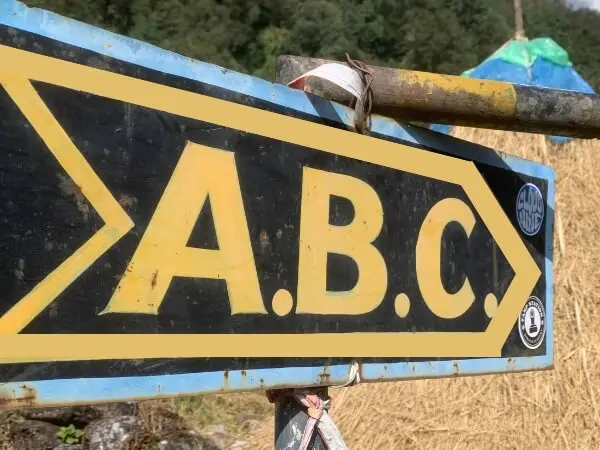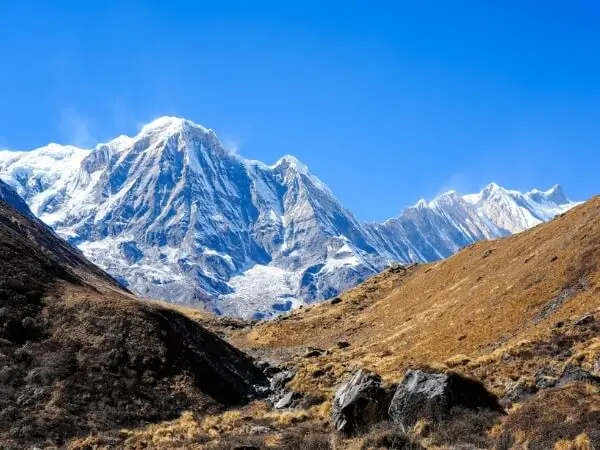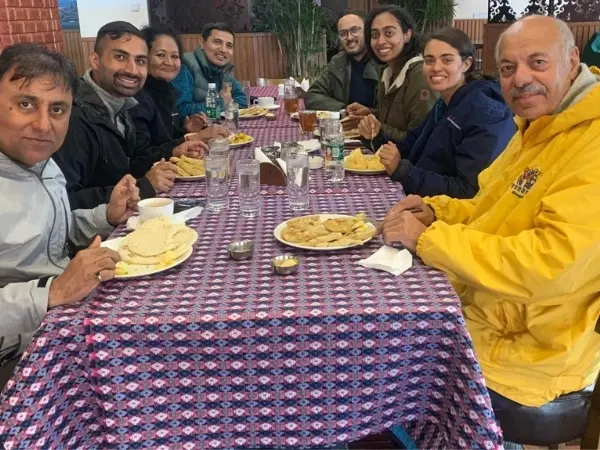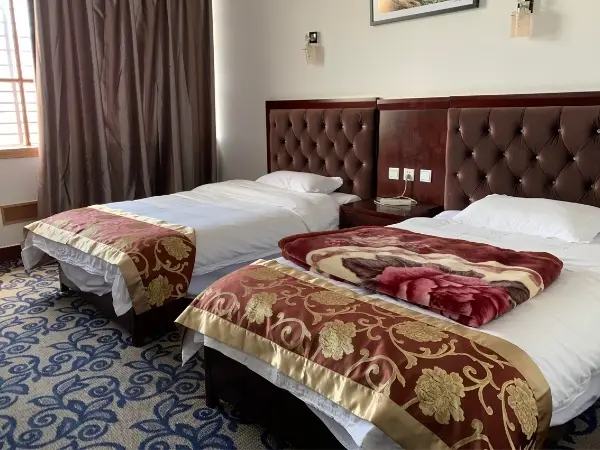Introduction: Kathmandu’s Living Heritage
Every autumn, Kathmandu becomes a stage for gods, dancers, and chariots. Indra Jatra is the largest street festival celebrated in Nepal that is more than just a religious ceremony, it's a display of the cultural importance. Indra Jatra celebration in Kathmandu honors Indra, the god of rain, and shows off the Newar community's cultural brilliance. For locals, it’s season of devotion and pride. For visitors it feels like they are walking into a living museum where traditions that have been around for hundreds of years are still going strong.
.jpg)
Origins of Indra Jatra
Historians say that the first records of Indra Jatra go back to the times of King Gunakamadeva in the 10th century. His vision was to honor the city’s foundation while ensuring good harvests. Through the years, the festival integrated politics, religion, and social life. Through the years, the rite turned into a civic festival where kings displayed their power and farmers expressed gratitude. Its thousand-year history remains deeply woven into Kathmandu’s identity and highlights the Indra Jatra legend and story.
The Legend of Indra’s Capture
The mythology behind the Indra Jatra Festival in Nepal is rather intersting as well as theatrical. It is said that the Indra God came down to earth as a human to collect the parijat flowers for his mother. He was then captured by the locals who thought he was a theif and was tied. When the locals realised his true nature, they agreed to free him but only on the terms that he gets worshipped for the rest of his life. That was the beginning of Indra Jatra Festival, a festival which marks the peace of the gods and is celebrated by a people till date.
Moral Lessons from the Myth
The story of Indra’s capture is more than entertainment, it is moral instruction. All gods, even Indra, must honor human societies. For the farmers, the lesson was more straightforward, Indra's anger would stop the rains, but justice was always a human affair. This inversion of power reflects Kathmandu’s belief in balance between heaven and earth, ruler and subject, God and a man. Humility and interdependence will always remain. This has sculpted the Indra Jatra cultural significance for many years.
Importance of Rain and Harvest
The significance of the festival revolves around Indra's rains. The monsoon season ends in September, which is an important time of year for growing rice. As a result, Indra Jatra rituals serve as a prayer for ongoing agricultural prosperity as well as a thanks for the rain. For farming families, the celebrations express gratitude toward cycles of the nature. The symbolism still exist today, connecting urban festivities with the rural heartbeat of Nepal’s economy, reminding all of the festival’s enduring role in Indra Jatra Nepal.
Lunar Calendar Timing
Unlike festivals fixed by solar dates, Indra Jatra follows Nepal’s lunar calendar Indra Jatra starts on the twelfth day of the waxing moon of Bhadra which is around September, and it lasts for eight days. The changing calendar days bring more thrill every year. According to religious practices, the calendar is made based on complex systems of the stars and cosmic calculations. This link between festival and lunar rhythm emphasizes continuity between ancient cosmology and Nepal’s agricultural cycle.
Raising the Linga
The raising of a tall wooden pole, known as a linga, in Indra Jatra Kathmandu Durbar Square serves as the opening act for Indra Jatra Nepal. The pole, which was ceremoniously purified after being cut from a single tree, symbolizes Indra's heavenly power. Priests bless it in front of crowds, and in a dramatic ceremony, strong men raise it to its feet. This signifies Indra's arrival in Kathmandu, highlighting the festival's Indra Jatra rituals and ushering in days of communal celebration.
The Role of Durbar Square
Durbar Square in Kathmandu serves as the festival's main stage. Its temples, courtyards, and palaces offers a dramatic celebrations for processions and dances. Every night, large crowds fill the durbar square to watch the Indra Jatra dance and masks unfold. Tourists find it as a unique opportunity to witness heritage come to life, while for locals, it is a sacred duty.

Preparation and Anticipation
The city gets ready for Indra Jatra Nepal, from weeks before. Families’ clean courtyards, light oil lamps, and prepare for the offerings according to the ritual. There are a lot of sweets, fruits, and ceremonial items prepared in the markets. Children’s are very excited to see the Lakhey and Pulukisi figures. The excitement brings together families, neighborhoods, and the whole valley, reminding everyone of their shared history and Indra Jatra cultural significance.
The Royal Connectiona
Nepal's kings were the most important persons at the Indra Jatra event in Kathmandu for hundreds of years.
They watched processions and got blessings from the Kumari who is known for Nepal's living goddess, from Hanuman Dhoka Palace. This ceremony confirmed their divine authority. Even though the monarchy was ended in 2008, state officials still follow the tradition. The presence of leaders today represents continuity and indicates how Indra Jatra is a mix of politics with spirituality.
Kumari Jatra: A Festival within a Festival
At the center of Indra Jatra lies the Kumari Jatra, the procession of the living goddess Kumari. Known as the symbol of heavenly feminine power, she is carried around Kathmandu in a gilded chariot. This event could be a festival on its own, but during Indra Jatra in Nepal, it stands out as a tremendous highlight that combines myth, royalty, and spirituality.
The Tradition of the Living Goddess
Kumari is a prepubescent Newar girl chosen through a various rigorous selection. She must meet particular physical and astrological qualifications, showing purity and divine presence. Once chosen, she lives at Kumari Ghar, the Kumari's palace in Kathmandu Durbar Square. During Indra Jatra, she enters the public spotlight, and her presence is seen as an auspicious blessing by both rulers and ordinary people.
Chariots of the Three Deities
Kumari is not the only deity in procession, two other deities, Ganesha and Bhairav, each have a separate chariot. These processions shows the unity of Kathmandu's protective powers, which encompass innocence, wisdom, and might. All three chariots are pulled by people through narrow streets, and sometimes the chariots fall dangerously over the bends. Every fall is met with loud cheers, chants, and the fierce intensity of dedicated passion.
Routes through the City
The chariots follows the traditional routes through the old city including Hanuman Dhoka, Kilagal, and Asan, which are significant localities. Every community has a route attributed to them which has a symbolic meaning that every community receives blessings. People come out of their homes and sit on balconies, courtyards, and streets to welcome the gods. For most people, the festival’s highlight, which offers prosperity and protection for the year ahead.
Symbolism of the Chariots
The chariots serve a greater purpose than just transportation. They symbolize and bring to the human settlements the very presence of the gods. Their journey through the streets serves as a reminder of the efforts of everyone from the community. The chariots move in a wild but rhythmic way, symbolizing how life can be unpredictable but is guided by mutual effort and respect.
Community Participation in Processions
Pulling the chariots is considered a privilege. Men compete for the chance to grasp the ropes, while women and children cheer on the streets. Families offer food and drinks to the participants. It is a unity in work that serves to equate everyone by dismissing the differences in class or status that is existing in society. Everyone is an equal devotee, working for this living goddess the Kumari and her divine companions to whom the chariots are drawn.
The Kumari’s Gaze
It is widely held that the Kumari’s gaze during the procession has the ability to change one’s fate. As devotees hold their breath, a glance from the goddess is an overpoweringly fortunate blessing. Parents lift their children high to catch her eye. This gives the Indra Jatra festival its most spiritually powerful moment as the Kumari and their devotees, the communities, share this sacred gaze.
Mask Dances: Living Myths on Stage
In addition to the chariots, Indra Jatra is known for its mask dances. Dancers wearing ornate wooden masks depict gods, demons, and mythical animals. These dances take place in courtyards and open squares and describes the story of the cosmic battles between good and evil. These dances are not just for the sake of entertainment but have a greater purpose, to summon divine spirits and clean all evil obstacles in the community.
The Lakhey Dance
Among the dances, the Lakhey dance is the most captivating. The Lakhey, a demon figure, a red face and untamed hair, bursts into the square with an uncontrolled energy. He is said to guard children and eliminate evil spirits. His incoherent movements and the relentless drumming surprises the audience. Though frightening to look at, the Lakhey is ultimately a guardian, symbolizing the protection through chaos.
Pulukisi: The White Elephant
An additional captivating character is Pulukisi, the white elephant known to be the carrier of Indra. A dancer in a specific custumes personifies Pulukisi, he roams the streets, teasing children and engaging the crowds in a playful and entertaining manner. His comic antics amuse the spectators and lighten the occasion. Symbolically, Pulukisi serves as a reminder of Indra’s divine roots, which is connected to the legend of the rain god.
Aakash Bhairav’s Fierce Presence
Displayed at Indra Chowk during Indra Jatra is an image of Aakash Bhairav, the god of the sky. Offered and flowered, his fierce blue face commands respect, and worshippers eagerly line up to receive his blessings. Aakash Bhairav’s image connects the festival to the protective deities of Kathmandu and highlights the balance between the kind and the fierce, guardian gods. His image highlights the protective aspects of the festival.
Music as Festival Pulse
The drums, cymbals, and trumpets are the instruments that keep the rhythm of Indra Jatra. The pounding rhythms guide dancers, energize processions, and stir emotions in crowds. The music turns the city into a resonant chamber where the gods and men communicate through sound. For many, the rhythms of Indra Jatra remain unforgettable, echoing in memory for a long time.
Food and Festive Sharing
Along with the ceremonies, food is a significant aspect of the celebration. Families prepare special meals consisting of beaten rice, deep fried bread, and other local dishes. Guests are offered sweets, drinks, and other treats as an offering of hospitality. Serving food is a gesture of the community’s hospitality. It makes certain the feast is not only a religious celebration but also a meal to celebrate together.
Role of Children in the Festival
During Indra Jatra, children actively participate in the festivities. They run around Pulukisi, shout with delight at the Lakhey, and take part in smaller dance marches. Participation is encouraged by families, aiming to instill cultural pride in children. By engaging youngsters directly, the event preserves its continuation, ensuring that future generations take its traditions forward.
Women’s Participation
Although men take the lead in public events such as chariot pulling, women are central to Indra Jatra. They take care of all the hospitality which are needed, preparing the offerings and conducting the household rituals. Female devotees roam the shrines with oil lamps, turning the place into a sea of light. Their contributions remain indispensable, though often less visible.
Celebrations Beyond Durbar Square
Indra Jatra centers on Durbar Square but spreads well beyond it. Different parts of Kathmandu arrange their own dances, firelight parades, and communal feasts. While families decorate shrines at home, music and offerings are organized by neighborhood. These small scale celebrations make sure the festival is celebrated from the heart of Kathmandu, but also to every alley, courtyard, and household.
Hindu and Buddhist Participation
Newar Buddhists, to whom Hindu Indra Jatra is primarily devoted, also celebrate the mask dances, offer prayers, and join the processions. Both Hindus and Buddhists honor deities such as a Bhairav. Deities such as a Bhairav are revered in both traditions. This shared culture illustrates Kathmandu’s cultural diversity, where religious boundaries are minimal. Indra Jatra is a place where the devoted from different religions can also participate in the way they choose.
Neighborhood Torch Processions
Each night, the “sawa bhakku” organizes the neighborhood torchlight processions. Different men and boys from different groups, alongside drummers, walk through alleys, bearing flaming torches. This ritual serves the purpose of paying respects to the ancestors as well as cleansing the area of negative energies. The sight of dozens of torch-bearing processions converging on central squares creates an atmosphere of awe, linking intimate neighborhood rituals with citywide celebration.
Role of Local Guthi Societies
Newar guthis a traditional, social and religious organizations play a crucial role. They sponsor dances, maintain masks, and finance processions. Guthis are the guardians of their culture, therefore ensuring that every rite smoothly flows from generation to generation. Such is their presence that it influences beyond drama for Indra Jatra, carrying funerals, feasts, and other communal activities. Without the presence of such societies, such complicated structure of the festival could not withstand the pressure of modernism.
Youth Engagement in the Festival
Young people brings fresh energy to Indra Jatra. They join music bands, pull chariots, and document celebrations on social media. Being part of the celebration is their cultural pride in the face of an evolved city. Their commitment and passion ensure that the ancient rites evolve with time and that Indra Jatra creates links between the younger generation of Kathmandu and their aspirations of yesterday.
Economic Boost for Local Vendors
The festival is important for Kathmandu’s economy. Vendors line streets selling snacks, fruits, and festival goods. Vendors line the streets selling snacks, fruits, and items for the festival. Mask makers and chariot builders get repairs and maintenance work, and musicians arrange concerts. Hotels and restaurants get flooded with tourists and it helps to provide crucial seasonal boost for small businesses as well.
Tourism and Global Recognition
Tourism agencies promote Indra Jatra as a must see event, attracting the traveler who are craving for an authentic cultural experience. It is photographed and filmed, further popularizing its images across the globe. Despite world attention, the festival resists commercialization. Unlike all kinds of staged cultural programs, Indra Jatra takes place on its own terms. Visitors have to adapt to the rhythm of the crowd's movements, which gives the more immersive, genuine and unpredictable experience.
Cultural Preservation Amid Change
Kathmandu has modernized at a fast pace during much of the last century, yet Indra Jatra has remained extraordinarily resilient. It is performed against all odds of earthquakes, political ups and downs, and demographical changes. Preservation efforts by guthis, along with local families and cultural activists, ensure its authenticity. Where rituals may change, core traditions endure. This persistence shows Nepal’s how Nepal is strong at preserving its cultures, where ancient practices remain alive despite much pressures of globalization.
Challenges of Urban Growth
However, urban growth poses threats to Indra Jatra. Some narrow alleys that were designed for foot traffic are now barely accommodating large chariots and huge crowds. Congestion of traffic at times makes it difficult for processions to take place. Sometimes the huge commercial billboards overshadow the sacred sites. Yet despite these difficulties, the people redirect the sacred routes, manage the crowds, and prioritize the festival ahead of any urban inconvenience.
Indra Jatra as a Social Mirror
The festival represents Kathmandu’s social life. It showcases the unity across castes, religions, and neighborhoods, yet also highlights challenges like overcrowding or inequalities of resources. It is a reflection of the life-affirming resilience, creativity, and contradictions of the city. While they dance, chant, and worship as one, they are not just worshiping, they are engaged in social negotiations. Thus, in all its colors, Indra Jatra is a reflection of Kathmandu.
Lessons for Cultural Preservation
The Indra Jatra presents broader lessons for cultural preservation. It shows that rituals persist best when grounded with community. The outsiders may admire or document the festival, but it is the insiders who keeps it alive. By involving children, maintaining guthis, and keeping a healthy relationship between tradition and adaptability. Kathmandu offers a model of cultural resilience. In a bigger picture, this is a lesson for societies everywhere, heritage is alive as long as its people nurture it.
Reflections on Kathmandu’s Identity
Ultimately, Indra Jatra is incarnate Kathmandu. It is a week-long synthesis of the valley's history, mythology, and values. The living goddess merges into the shared cultural space alongside protective gods and political leaders and common citizens. For the locals, it is an assurance that heritage carries on, for the outsiders, it is a revelation, for Kathmandu itself, it is a heartbeat the steady pulse, resilient and unforgettable.
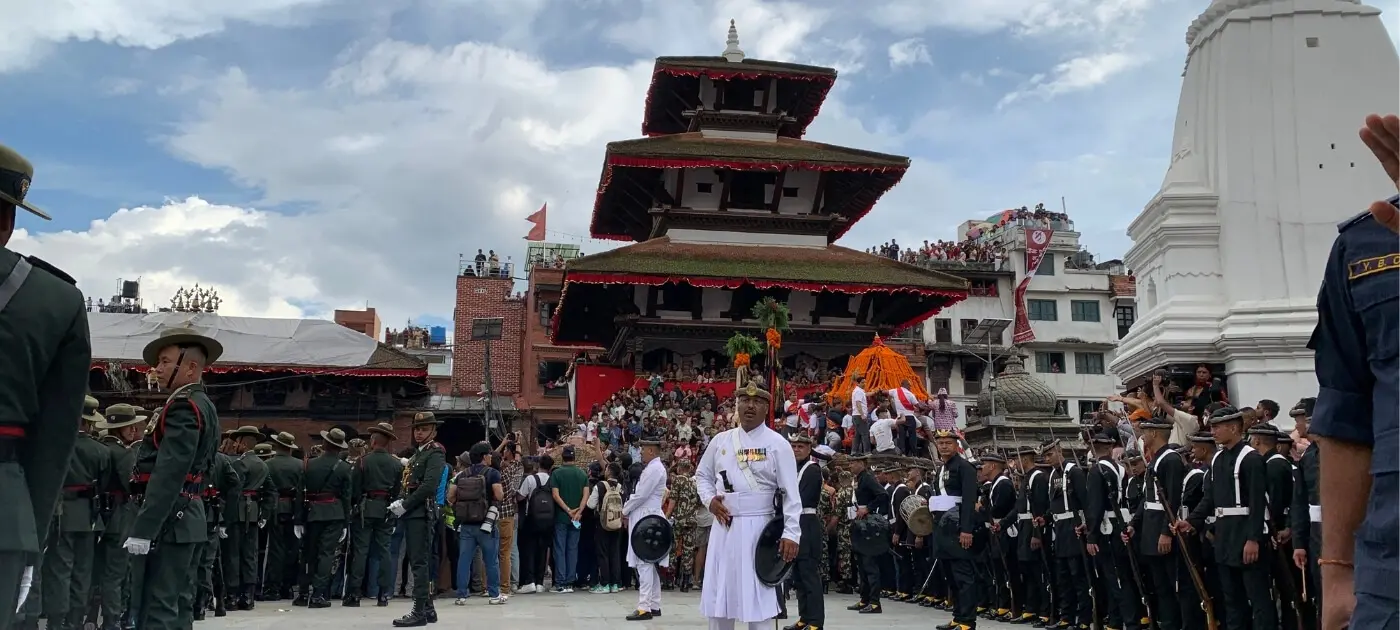
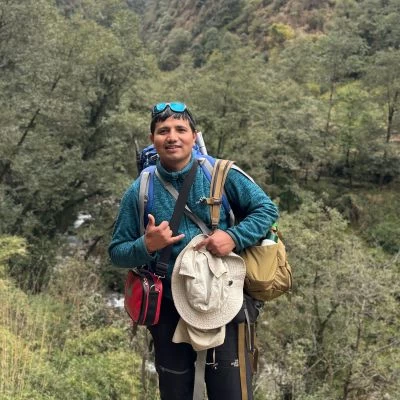
.jpg)

